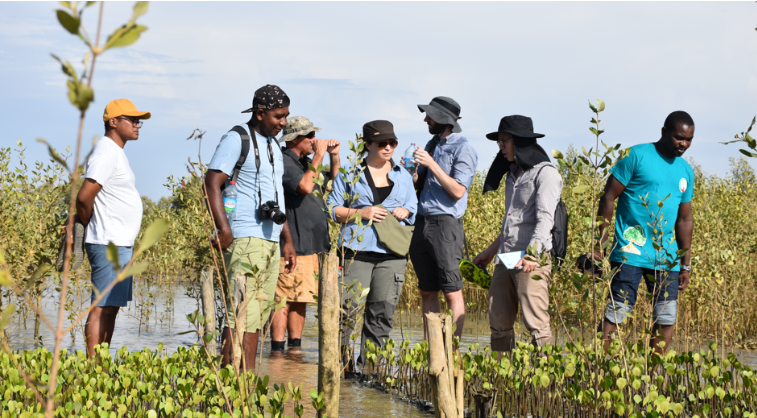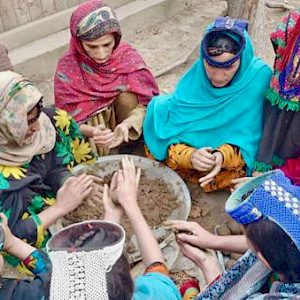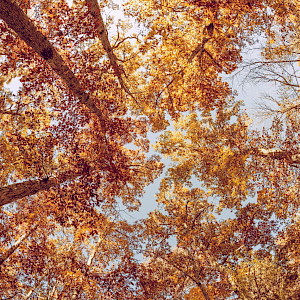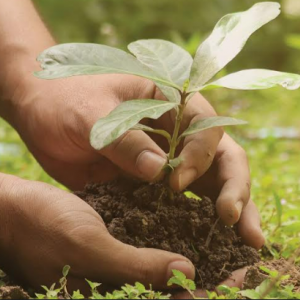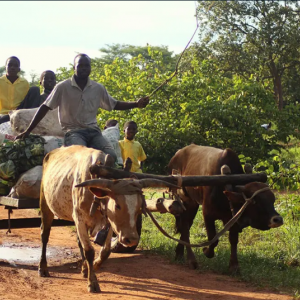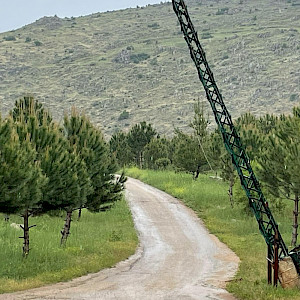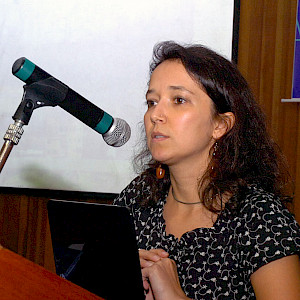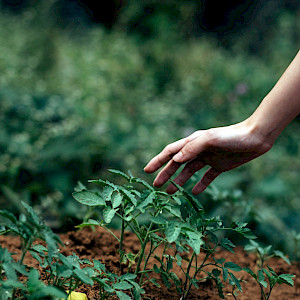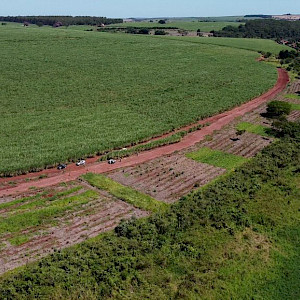The fishermen of western Madagascar rely on mangrove ecosystems to protect the fishing grounds of the Mozambique channel. The mangroves provide the wood needed to make fishing craft, they buffer the waters from waves and storms, and they harbor the fish. Coastal communities recognize the importance of mangroves but have struggled with over exploitation of the woody ecosystem. In exploited areas, now devoid of vegetation, sand dunes remain mobile and unstable, and the planting of mangrove seeds is particularly difficult. A direct seedling restoration approach in degraded areas has yielded an average survival rate of less than 10 percent. The United States Department of Agriculture (USDA) Forest Service and partners recently improved the mangrove restoration survival rate by ninefold. The fishermen and community members they work with produced and planted 58,681 robust mangrove seedlings in degraded areas.
The USDA Forest Service has been partnering with the Malagasy government, the US Agency for International Development and eight communities in the Menabe region of western Madagascar to employ a biophysical approach to mangrove restoration. The approach assesses tidal, soil and environmental conditions of proposed restoration sites and then adjusts mangrove propagation and outplanting methods to match ecosystem needs. Invested community members lead both the propagation and planting of the robust seedlings. The results have been e ncouraging. Recent monitoring found that in sites where seedlings were developed in a nursery, based upon results from a biophysical assessment, survival rates of planted seedlings were 90% after several months.
"The success on the ground deserves to be copied in a large government project such as SWIOFISH 2 [West Indian Ocean Fisheries Governance and Shared Growth Project, funded by the World Bank]"; said Mr. Tsiry Niaina Randrenjarivelo, Regional Directorate of Fisheries and the Blue Economy in Menabe. SWIOFISH 2 aims to restore 1,000 hectares of mangroves in the Menabe region, in collaboration with the non-governmental organization Tany Ifandovana. Thanks to initial success by the USDA Forest Service team and our partners, the large project will employ the biophysical approach.
The biophysical approach has been a gamechanger in the Menabe region. Past mangrove restoration efforts in the region have suffered due to the challenges of a semi-arid climate and the impacts from shifting coastal sand dunes and upland erosion impacting soil and freshwater flows. A direct seeding approach yielded low rates of survival. Mangrove forests play a vital role in mitigating impacts from rising sea levels and strong winds and storm surges exacerbated by climate change. They also provide invaluable sources of sustenance for coastal communities by serving as breeding grounds for coastal fisheries. While recognized for their important ecosystem and livelihood services, mangroves are also under great threat caused by upland erosion, deforestation for use of wood for creating charcoal and construction materials, as well as clearing for homes and agricultural land.
MORE PROGRAMS QUICKLY ADOPT USDA FOREST SERVICE BIOPHYSICAL APPROACH
The Regional Directorate of Forestry and Sustainable Development has sought replication of the biophysical approach by moving a terrestrial-based mangrove nursery to one that is located in the tidal zone of the Kimony village. The adapted approach will allow the seedlings to be developed in conditions similar to those in which they will be planted, which should improve likelihood for survival.
An Oxfam/United Nations Habitat organization project, implemented by Alliance Voahary Gasy (AVG), has sought Forest Service technical advice and visited Forest Service-supported nurseries in the village of Betania to hear from community members and learn from their practices. AVG is now scaling up its mangrove nurseries and seed production efforts with community members is Betania who have participated in USDA Forest Service training sessions. AVG plans to restore 192 hectares of mangroves.
The quick adoption of the USDA Forest Service biophysical approach to mangrove restoration illustrates the success small projects can have when indigenous knowledge and scientific practice are thoughtfully combined and when natural resource management practitioners share their best practices. The continued leveraging of the approach and of fruitful collaborations could lead to significantly improved mangrove forest cover in the Menabe region in the coming years. That improved cover will improve livelihoods for coastal communities and improve Madagascar’s resilience to climate change.

